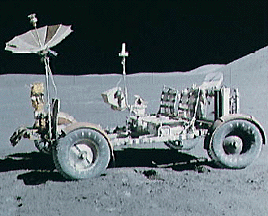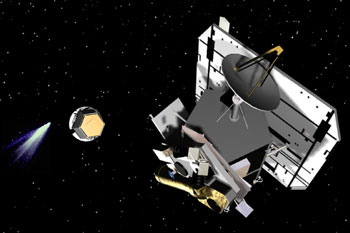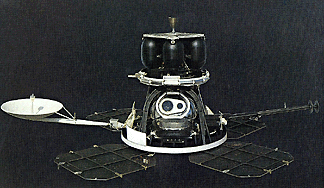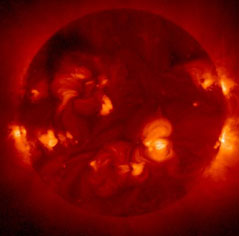This is an X-ray image of the Sun taken with the Soft X-Ray Telescope (SXT) on the orbiting Yohkoh satellite. This is an example of the deep, red images of the Sun you might've seen. This particular image was taken on November 23, 1999.
Click on image for full size
ISAS/Yohkoh team/Lockheed Palo Alto Research Laboratory
Yohkoh Mission
Have you seen a deep, red picture of the Sun like the one on this page? Do you know where it came from? The Yohkoh satellite may have taken it! Yohkoh was launched from Japan in 1991. For over ten years, it has been sending back images of the Sun in X-ray and gamma ray light. X-ray and gamma ray light are regions of light we can't normally see with our eyes! That's why we need Yohkoh to do the looking and picture taking for us.
The Yohkoh satellite helps scientists study solar flares. Flares are fast bursts of light given off by the Sun. They are full of X-rays and gamma rays, and scientists want to know why. Yohkoh is also used to study coronal mass ejections and other solar activity.
Yohkoh has been experiencing problems since December 2001. The trouble was started by an eclipse of the Sun. Even if the Japanese space program can't get Yohkoh out of trouble, the mission can be counted as a great success.
You might also be interested in:

The Hubble Space Telescope (HST) is really neat! It was first launched in 1990, but scientists started building it in the 1970's! We have found all kinds of objects like stars, nebulae and galaxies. The
...more
Apollo 11 was the first mission that landed a person on the moon. On July 16, 1969, the U. S. rocket Saturn 5 was launched carrying the lunar landing module Eagle. The Eagle was released and it reached
...more
Apollo 12 was launched on Nov. 14, 1969 and arrived at the Moon three days later. Astronauts Charles Conrad and Alan Bean descended to its surface, while Richard Gordon remained in lunar orbit aboard the
...more
Apollo 15 marked the start of a new series of missions from the Apollo space program, each capable of exploring more lunar terrain than ever before. Launched on July 26, 1971, Apollo 15 reached the Moon
...more
NASA chose Deep Impact to be part of a special series called the Discovery Program. This program is for cheap, scientific projects. In May 2001, NASA said it was ok to start with mission development for
...more
Galileo was a spacecraft that orbited Jupiter for eight years. It made many discoveries about Jupiter and its moons. Galileo was launched in 1989, and reached Jupiter in 1995. The spacecraft had two parts.
...more
During 1966 through 1967, five Lunar Orbiter spacecrafts were launched, with the purpose of mapping the Moon's surface in preparation for the Apollo and Surveyor landings. All five missions were successful,
...more















